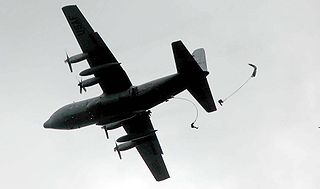
Pisa is a city and comune in Tuscany, central Italy, straddling the Arno just before it empties into the Ligurian Sea. It is the capital city of the Province of Pisa. Although Pisa is known worldwide for its leaning tower, the city of over 91,104 residents contains more than 20 other historic churches, several medieval palaces, and various bridges across the Arno. Much of the city's architecture was financed from its history as one of the Italian maritime republics.

The Leaning Tower of Pisa or simply the Tower of Pisa is the campanile, or freestanding bell tower, of the cathedral of the Italian city of Pisa, known worldwide for its nearly four-degree lean, the result of an unstable foundation. The tower is situated behind the Pisa Cathedral and is the third-oldest structure in the city's Cathedral Square, after the cathedral and the Pisa Baptistry.

The Republic of Genoa was an independent state and maritime republic from the 11th century to 1797 in Liguria on the northwestern Italian coast, incorporating Corsica from 1347 to 1768, and numerous other territories throughout the Mediterranean and the Black Sea.

The Province of Pisa is a province in the Tuscany region of central Italy. Its capital is the city of Pisa. With an area of 2,448 square kilometres (945 sq mi) and a total population of 421,642, it is the second most populous and fifth largest province of Tuscany. It is subdivided into 37 comuni.

Ugolino della Gherardesca, Count of Donoratico, was an Italian nobleman, politician and naval commander. He was frequently accused of treason and features prominently in Dante's Divine Comedy.

Meloria is a rocky skerry, surrounded by a shoal, off the Tuscan coast, in the Ligurian sea, 6.1 kilometres (3.8 mi) north-west of Livorno.

The Battle of Meloria was fought near the islet of Meloria in the Ligurian Sea on 5 and 6 August 1284 between the fleets of the Republics of Genoa and Pisa as part of the Genoese-Pisan War. The victory of Genoa and the destruction of the Pisan fleet marked the decline of the Republic of Pisa.

Aristodemo Costoli (1803–1871) was an Italian sculptor who spent his entire career in the city of Florence. His students included Girolamo Masini, Augusto Rivalta and his son Leopoldo Costoli.

The Republic of Pisa was a de facto independent state centered on the Tuscan city of Pisa, which existed from the 11th to the 15th century. It rose to become an economic powerhouse, a commercial center whose merchants dominated Mediterranean and Italian trade for a century before being surpassed and superseded by the Republic of Genoa.

Montaione is a comune (municipality) in the Metropolitan City of Florence in the Italian region Tuscany, located about 35 kilometres (22 mi) southwest of Florence.

The maritime republics of the Mediterranean Basin were thalassocratic city-states in Italy and Dalmatia during the Middle Ages. The best known among them were Venice, Genoa, Pisa and Amalfi; less known, but not always less important, are Ragusa, Gaeta, Ancona, and the little Republic of Noli.

The Torre dei Gualandi is a former tower in Pisa, central Italy, now included in the Palazzo dell'Orologio.
JohnVisconti was the Judge of Gallura from 1238 to his death. He was a member of the Visconti dynasty of Pisa.

The Gherardeschi or della Gherardesca were a family of the Republic of Pisa, dating back as early as the 11th century of Longobard origin.

On 9 November 1971, a Royal Air Force Lockheed Hercules C.1 crashed into the sea off the coast of Livorno by Meloria shoal, Italy, killing all 46 passengers and 6 crew. At the time it was described by Italian officials as the worst military air disaster in Italy in peacetime.

The Appiani is an Italian noble family, originally from Al Piano or Appiano, a now disappeared toponym identified with the modern La Pieve in the comune of Ponsacco. They held the principality of Piombino from the early 15th century until 1628.

The Iron Swordsman is a 1949 Italian historical drama film directed by Riccardo Freda and starring Carlo Ninchi and Gianna Maria Canale. It is loosely based on real life events of Ugolino della Gherardesca.

Saint Ubaldesca Taccini was an Italian Catholic nun and member of the Order of Saint John. Her feast day is celebrated on 28 May.
The following is a timeline of the history of the city of Pisa in the Tuscany region of Italy.
Della is a female given name, a variant of Adela. Notable people with the name include:

















